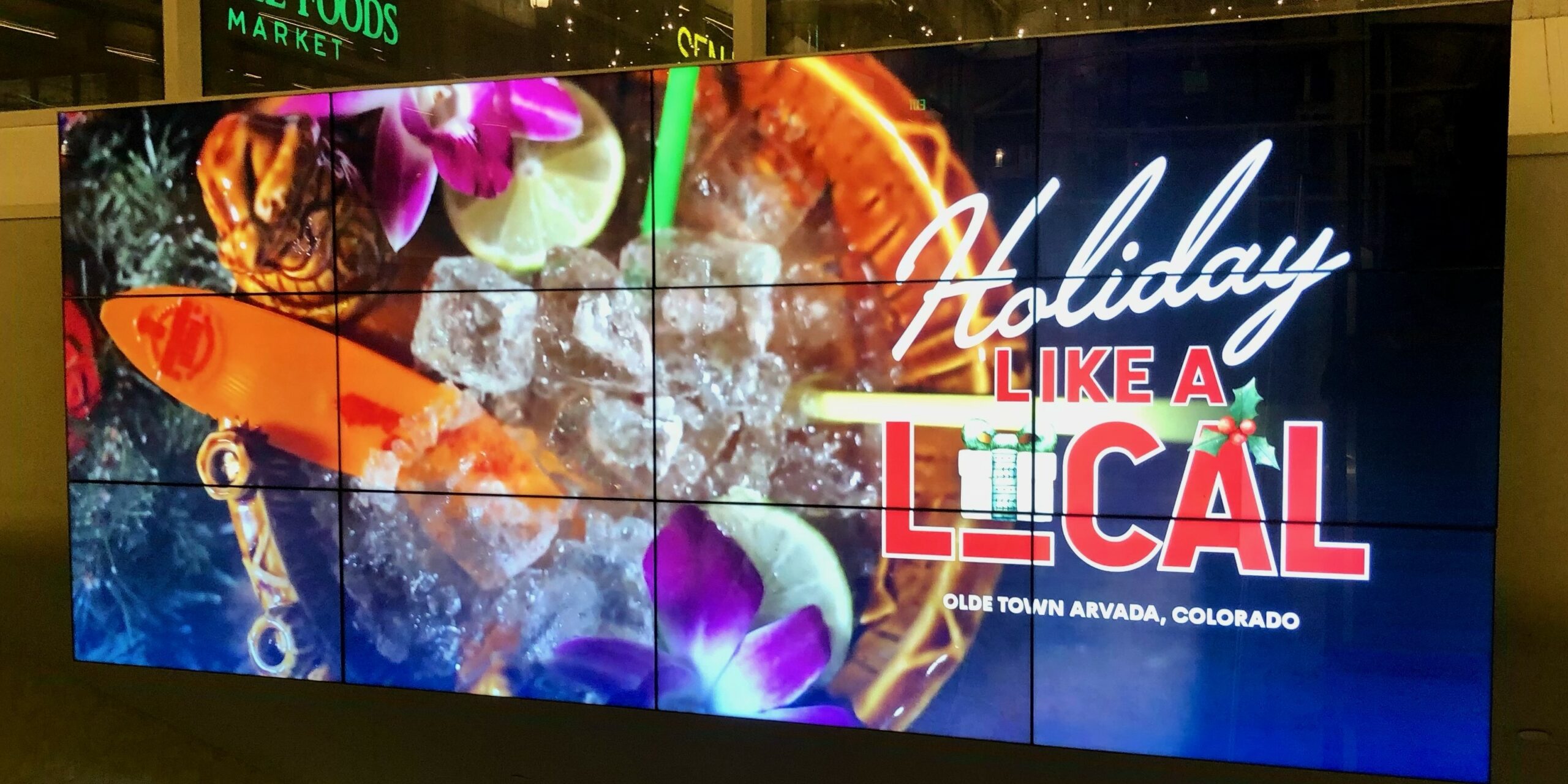
RTD Information Displays
GDT > Campaigns > RTD Information Displays
Please fill in our quick (less than 30 seconds) survey to support our campaign for RTD to adopt a policy that restricts advertising on passenger information displays at stations.
Prioritize RTD Transit Information, Not Advertising on Displays
Passenger information displays (PIDs) serve as an essential resource in the wayfinding process that enable both new and experienced riders to make critical decisions on which rail line or bus route to move in the direction of. One such display exists at the Chestnut Pavilion at Denver Union Station and is especially useful for riders connecting from the E & W light rail lines to the buses. By referencing the display effectively, it is not uncommon to accomplish a transfer and departure by bus in as little as 90 seconds from entering the DUS Bus Concourse.
Therefore, it is disappointing that this experience has been degraded by making riders wait for transit information while an advertisement is displayed at the exact moment a rider is least likely to be receptive to an advertiser’s message. While it is understood that advertising brings in much needed revenue for RTD, this should be considered against the needs of riders who contribute vastly greater sums to RTD by paying fares. The following restrictions on passenger information displays which also show advertisements are proposed:
- Passenger information displays must be 100% dedicated to transit information for at least 50% of the time.
- Advertisements (or groups of advertisements) are shown for no longer than 10 seconds at a time.
- The next bus or train departure must always be shown while advertisements are being displayed.
- Advertisements must not take up more than 80% of the display area.
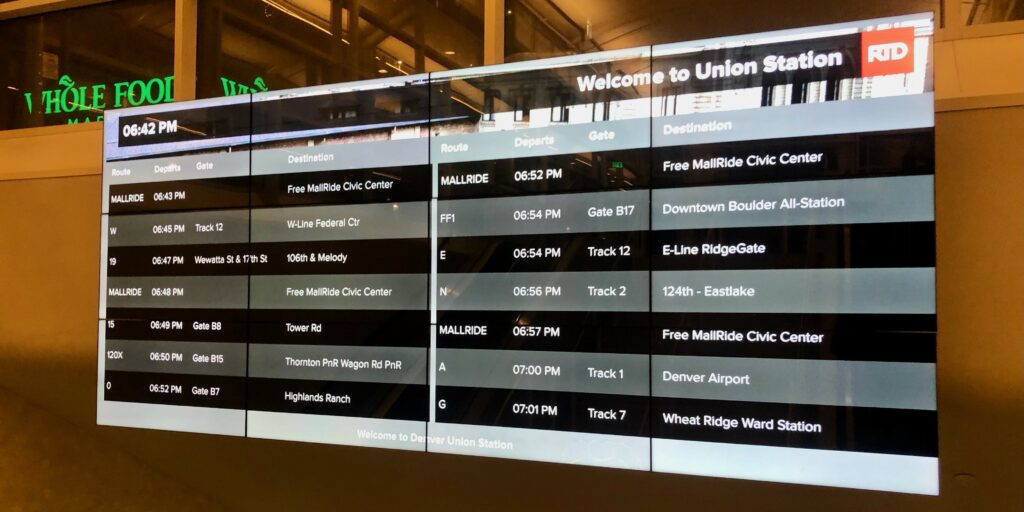
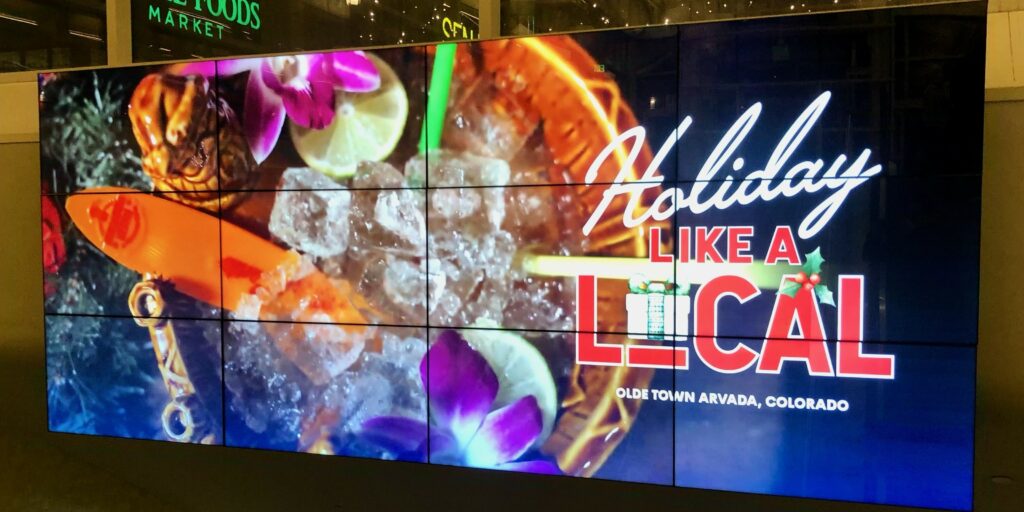
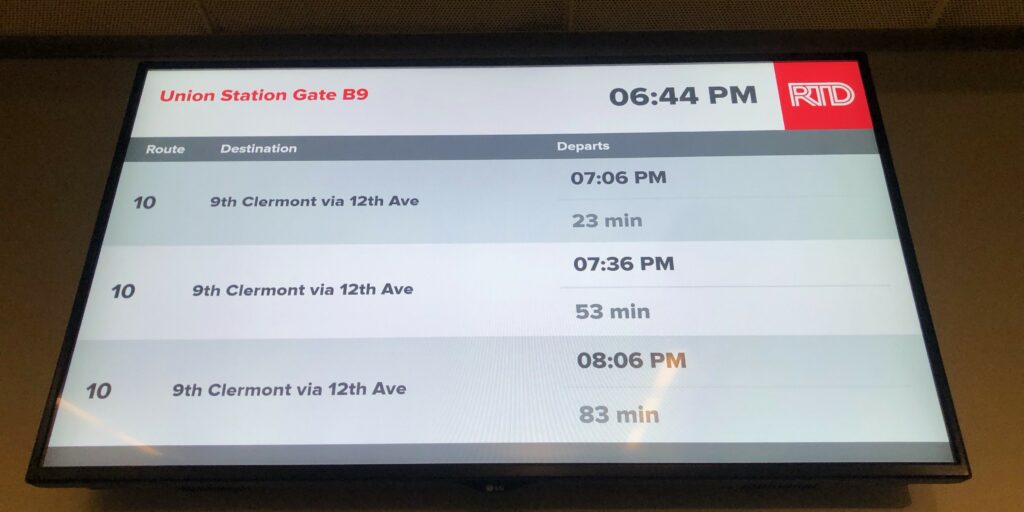
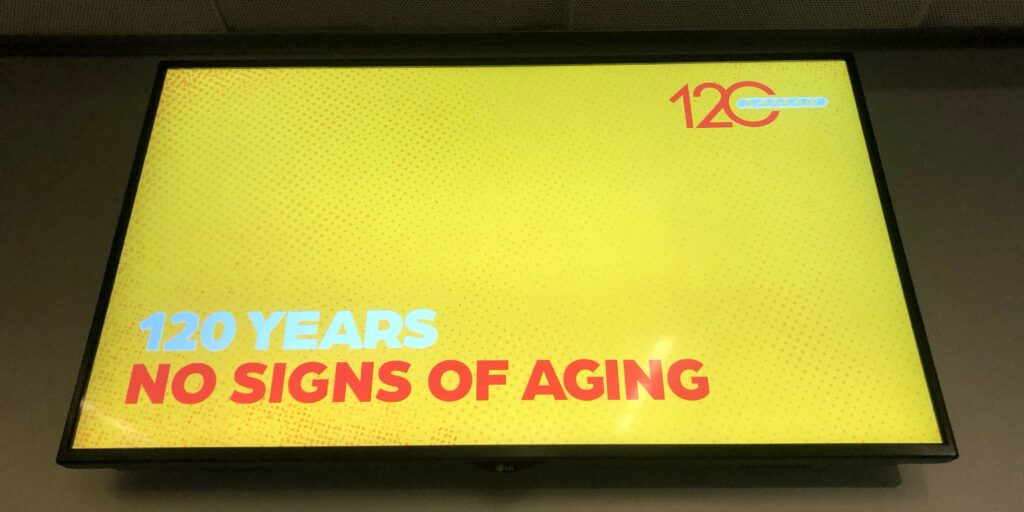
In the recent RTD Customer Experience and Community Value Research Report, satisfaction with ‘Quality of Service Communications’ declined from 79% in 2021 to only 59% indicating the agency needs to actively make information provision a high priority in 2023. Decisions that favor marketing over transit information are clearly at odds with any efforts to reverse this decline and put the riders first.
We request that RTD adopts a policy that restricts advertising on passenger information displays at stations.
As seen on #RTDInfoDisplays.
Frequently Stated Points
RTD will lose revenue from restricting information display advertising!
Total “advertising and other” revenue (that includes buses, trains, display screens, billboards etc.) for 2022 was just $2.7m compared to the $75m RTD’s riders contributed that year (see RTD Funding page). A top end estimate of the revenue lost (assuming some companies cannot accept the proposed restrictions and take their business elsewhere) is $500k.
If we restrict information display advertising, the fares will go up!
This is not true. As a result of the 2022 Fare Study, RTD is actually reducing its fares starting Jan 1st, 2024. The fare study cost $2m to carry out and will cost $10m+ a year to implement due to lower revenue from cheaper fares. A top end estimate of the revenue lost (assuming some companies cannot accept the proposed restrictions and take their business elsewhere) is $500k.
We need your help!
Please fill in our quick (less than 30 seconds) survey to support our campaign for RTD to adopt a policy that restricts advertising on passenger information displays at stations.
Sample Email – Just copy and paste to send…
Click here to email RTD about this.
To: RTD.BoardOffice@rtd-denver.com
Cc: greaterdenvertransit@gmail.com
Subject: Advertising on RTD Passenger Information Displays
Dear RTD Directors and Staff,
I am writing to express my support the RTD Board to adopt a policy that restricts advertising on passenger information displays at stations.
Passenger information displays (PIDs) serve as an essential resource in the wayfinding process that enable both new and experienced riders to make critical decisions on which rail line or bus route to move in the direction of. One such display exists at the Chestnut Pavilion at Denver Union Station and is especially useful for riders connecting from the E & W light rail lines to the buses. By referencing the display effectively, it is not uncommon to accomplish a transfer and departure by bus in as little as 90 seconds from entering the DUS Bus Concourse.
Therefore, it is disappointing that this experience has been degraded by making riders wait for transit information while an advertisement is displayed at the exact moment a rider is least likely to be receptive to an advertiser’s message. While I understand that advertising brings in much needed revenue for RTD, this should be considered against the needs of riders who contribute vastly greater sums to RTD by paying fares. I support the following restrictions on passenger information displays which also show advertisements:
- Passenger information displays must be 100% dedicated to transit information for at least 50% of the time.
- Advertisements (or groups of advertisements) are shown for no longer than 10 seconds at a time.
- The next bus or train departure must always be shown while advertisements are being displayed.
- Advertisements must not take up more than 80% of the display area.
As I feel these restrictions represent a reasonable compromise, I request that the RTD Board adopts them as policy relating to all current and future advertising on passenger information displays at stations.
Yours sincerely,
<Name>
Sample Letter – Just print and fill in to send…
Campaign Updates
Our letter to RTD…
On Dec 15th, 2022, Greater Denver Transit sent a letter to RTD outlining our concerns with advertising being mixed with transit info on the displays at Denver Union Station.
…and RTD’s response.
To RTD’s credit, the agency responded within three working days.
Please fill in our quick (less than 30 seconds) survey to support our campaign for RTD to adopt a policy that restricts advertising on passenger information displays at stations.